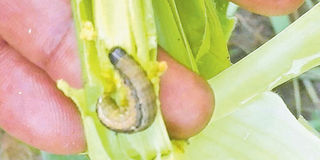UDSM students develop app for detecting crop diseases

What you need to know:
- Experience has shown that most farmers have been affected by pests and crop disease, as many emerge while they are unprepared to eradicate them, which causes more damage.
Dar es Salaam. University of Dar es Salaam (UDSM) students have designed an application which will enable farmers to detect crop pests and diseases.
The new application will also help farmers to prepare various mitigations for disease and pests in order to improve yields.
Experience has shown that most farmers have been affected by pests and crop disease, as many emerge while they are unprepared to eradicate them, which causes more damage.
The application known as AgroLenz will be donwloadable on farmers’ smartphones.
It was designed by a group of six UDSM students last year to help farmers avoid losses by simply detecting pests via their mobile phone cameras.
“Crops wither because of diseases. However, the new technology will help the farmers from suffering massive losses. They just have to take pictures of their plants and the application will inform them of diseases or pests wreaking havoc on crops,” team leader Anthony Elias told The Citizen yesterday.
“This innovation will help farmers to take appropriate measures at the right time, which means they will no longer suffer huge losses unless they ignore an advice of the application.”
The innovation is already under the Tanzania Commission for Science and Technology (Costech) through a technology hub which was founded in 2011.
According to Mr Elias, the country’s population is growing fast, but it is threatened by low agriculture productivity due to the vagaries of nature.
He cited climate change and rural-urban migration are among the factors ruining agricultural productivity. The idea came after they read a report published in 2016, which shows that crops worth Sh200 billion were destroyed by pests and diseases each year.
He further explained that the technology aims at encouraging the youth to engage in agricultural activities due to reducing risks of farming business.
Mr Elias added that that their innovation can also function even if users have no access to internet connections.
“We tested our application in January for pests that attack tomatoes and it worked well, so we are currently taking our tests to other varieties of crops,” he said.
He said an application will reach farmers through the various agriculture Institutes by the end of this year.
It is not going to be easy for every farmer to own smart phones, but the students say they will engage stakeholders to see whether there would be a special arrangement which will enable farmers to borrow smart phones.




